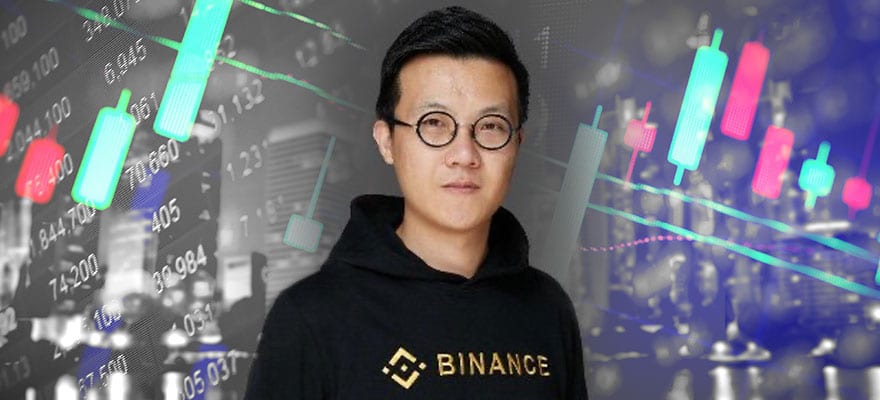The effects of the coronavirus on the globe have been many, but the virus has also had a strange impact on time: all at once, COVID-19 seems to have to massively slow down certain aspects of life and our world, and to have sped up others. The latter seems to especially true for cryptocurrency markets and the crypto industry as a whole.
Indeed, the effects of the coronavirus have been a sort of ‘stress test’ for the entire crypto industry. Amid days and weeks of extreme Volatility
Volatility
In finance, volatility refers to the amount of change in the rate of a financial instrument, such as commodities, currencies, stocks, over a given time period. Essentially, volatility describes the nature of an instrument’s fluctuation; a highly volatile security equates to large fluctuations in price, and a low volatile security equates to timid fluctuations in price. Volatility is an important statistical indicator used by financial traders to assist them in developing trading systems. Traders
In finance, volatility refers to the amount of change in the rate of a financial instrument, such as commodities, currencies, stocks, over a given time period. Essentially, volatility describes the nature of an instrument’s fluctuation; a highly volatile security equates to large fluctuations in price, and a low volatile security equates to timid fluctuations in price. Volatility is an important statistical indicator used by financial traders to assist them in developing trading systems. Traders
Read this Term, crypto trading platforms have either sank or swam as trading volumes hit record highs.
The Binance Futures platform has certainly been swimming. Since its launch less than seven months ago, the platform has become the largest perpetual futures Trading Platform
Trading Platform
In the FX space, a currency trading platform is a software provided by brokers to their respective client base, garnering access as traders in the broader market. Most commonly, this reflects an online interface or mobile app, complete with tools for order processing.Every broker needs one or more trading platforms to accommodate the needs of different clients. Being the backbone of the company’s offering, a trading platform provides clients with quotes, a selection of instruments to trade, real
In the FX space, a currency trading platform is a software provided by brokers to their respective client base, garnering access as traders in the broader market. Most commonly, this reflects an online interface or mobile app, complete with tools for order processing.Every broker needs one or more trading platforms to accommodate the needs of different clients. Being the backbone of the company’s offering, a trading platform provides clients with quotes, a selection of instruments to trade, real
Read this Term in the cryptocurrency space.
Recently, Finance Magnates sat down with Binance Futures vice president Aaron Gong, who has been leading the development and growth of Binance Futures. We asked Aaron about the platform’s strategy for growth, bumps along the road, and how the coronavirus has shaped Binance Futures and the entire crypto industry.
Finance Magnates · Blockchain Podcast #120 -- Aaron Gong, VP of Binance Futures
Before joining Binance, Aaron worked at CME Group where he launched new products in the APAC region, including BTC futures. He also spent time a New York-based hedge fund and a Dutch market-making firm.
”We always wanted to be number one.”
We asked Aaron about Binance Futures’ strategy for growing so quickly.
“Even before we launched our product, we always wanted to be number one,” Aaron said. However, “I was expecting us to reach this goal in 12 or 16 months, but we made it in seven months.”
Aaron explained that in the month following the launch of Binance’s derivatives platform, its market share was at ten percent of the then-largest professional cryptocurrency derivatives exchange’s market volume. “Then, we were at 20 percent in the second month,” he said, “[and] slowly moved up to 30 and 40 percent.”
https://twitter.com/AG_Binance/status/1241598730224062464
Then, “when we reached 50 percent earlier this year, I was pretty confident that we were going to be the largest one. And we made it shortly after 12th March--’Black Thursday’,” he said.
On that day, “the entire market landscape changed in our favor--we got more growth from users [who came] from other exchanges, which boosted [Binance’s derivatives platform] to become number one.”
Since then, “we’re seeing steady growth--the momentum is strong, and still there.”
Binance and its futures platform have taken a leaf from Reid Hoffman’s book--literally
What has fueled this growth?
Certainly, some of it can be attributed to market conditions--traders who may have exited spot markets during the epic BTC price crashes during the month of March may have attempted to profit off of Bitcoin futures contracts; additionally, technical issues on BitMEX, which was formerly the largest crypto derivatives exchange by volume, seem to have driven users away from BitMEX and onto Binance.
#BitMEX, the #world’s third largest #crypto #exchange, has continued to lose its #market share to #Binance #exchange after the #Black #Thursday #crash.https://t.co/qA7uqlnA4H#Rakamoto #TuesdayThoughts #Blockchain #Crypto #Bitcoin #Digital #Money #Coins #Dollar #Banks
— Crypto Market Cap (@CMC_Site) April 21, 2020
However, Aaron also explained that the futures platform’s growth strategy has also mirrored Binance’s larger growth strategy.
“When I first joined Binance, [Changpeng ‘CZ’ Zhao],” Binance’s chief executive, “gave me a book called ‘Blitzscaling’, written by Reid Hoffman, the founder of LinkedIn. I read it a couple of times, and it helped me to [orient] to the right direction--how to grow the business, and how to sell the products.”
“This has also translated into many fronts of our product features,” Aaron explained, adding that “[...] I would say there are several major reasons [that the platform is growing so fast.]”
“The first is our low taker fee model,” he began. “A lot of exchanges [previously] were using higher base [fees] for makers, and also charging high fees for takers. There are many [platforms] that have copied this model without showing their own strengths,” he said.
Traditional futures platform fee models have “a very big problem”
However, “this model has a very big problem,” because it essentially incentivizes traders to want to become makers: “this makes maker volume very difficult to get executed,” Aaron explained.
“In the opposite way, when you charge very low taker fees...as a result, from the very first days [that the platform was open], we’ve got the very first wave of the growth of taker volume.” In other words, because Binance futures’ taker fees were so low, “users offloaded their taker volume to our platform.”
“This drove the growth of our first foundation,” Aaron said.
The second major factor that catapulted Binance Futures to the top of the crypto derivatives space, Aaron said, is “innovation.”
“Innovation has always been a cornerstone of our platform. We are the first exchange to have launched 125x [leverage], and also Cross Collateral, and smart liquidation--all of these features have been widely used by our users.”
However, “the last thing is that we’ve got many more [trading] pairs--we’ve got 24 pairs so far,” and as such, “we are the largest exchange offering the most pairs.”
“This helps us to expand the market from a more horizontal perspective,” Aaron explained.
Binance Futures fee model was received with some friction
We also asked Aaron what the biggest challenges associated with launching and operating the platform have been.
“The biggest challenge is always during the time before launch and always the first month post-launch,” he said. “All of us worked day and night, and without weekends,” he said. “We would stay in the office until 4:00 A.M.”
Then, “when it was launched, we got a lot of challenges, both internally and externally, because of a lot of our clients were used to the fee model from other exchanges. They said, ‘ok, you guys will not be successful, because you are not using the right fee model,’ and that they would not trade on our platform.”
Internally, the message was more or less the same--”we got feedback that no one had done this before--no one had run a fee model like this,” and that therefore, “it won’t work.”
However, shortly after the platform launch, the new fee model “worked quickly.”
In fact, “this is also the main reason that we got tremendous success in the early days,” Aaron said.
The long-term effects of COVID-19 on crypto could be positive
“This year, definitely, is a very challenging year,” Aaron said. “Crude oil markets, a month ago, crash forty percent in a single day,” and prices have since gone negative. “Then, all other global markets were affected as well--stock markets, commodity markets,” he continued.
https://twitter.com/AG_Binance/status/1252112341358919681
“I believe that this is partly the reason why crypto markets crashed on 12th March--[traders decided] that they have to liquidate their crypto positions in order to meet their margin requirements.”
“Fortunately, shortly after that day, we saw a healthy development in our open interest--our open interest has been growing steadily, which means that the market is recovering at a good pace,” Aaron said.
He also explained that in the long-term, the cycle of economic events that has followed in the wake of the coronavirus may even be good for cryptocurrency in the long run: “in general, it’s good for crypto markets, because a lot of central banks are promoting quantitative easing policies,” and there’s an expectation that “inflation will happen.” A number of analysts believe that this inflation will cause a bump in cryptocurrency adoption.
This is an excerpt. To hear the full interview with Aaron Gong, VP of Binance Futures, visit us on SoundCloud or Youtube. Aaron Gong is also slated to appear as a panellist at the upcoming Virtual Vision Expo. Special thanks to Aaron and to the Binance team.
The effects of the coronavirus on the globe have been many, but the virus has also had a strange impact on time: all at once, COVID-19 seems to have to massively slow down certain aspects of life and our world, and to have sped up others. The latter seems to especially true for cryptocurrency markets and the crypto industry as a whole.
Indeed, the effects of the coronavirus have been a sort of ‘stress test’ for the entire crypto industry. Amid days and weeks of extreme Volatility
Volatility
In finance, volatility refers to the amount of change in the rate of a financial instrument, such as commodities, currencies, stocks, over a given time period. Essentially, volatility describes the nature of an instrument’s fluctuation; a highly volatile security equates to large fluctuations in price, and a low volatile security equates to timid fluctuations in price. Volatility is an important statistical indicator used by financial traders to assist them in developing trading systems. Traders
In finance, volatility refers to the amount of change in the rate of a financial instrument, such as commodities, currencies, stocks, over a given time period. Essentially, volatility describes the nature of an instrument’s fluctuation; a highly volatile security equates to large fluctuations in price, and a low volatile security equates to timid fluctuations in price. Volatility is an important statistical indicator used by financial traders to assist them in developing trading systems. Traders
Read this Term, crypto trading platforms have either sank or swam as trading volumes hit record highs.
The Binance Futures platform has certainly been swimming. Since its launch less than seven months ago, the platform has become the largest perpetual futures Trading Platform
Trading Platform
In the FX space, a currency trading platform is a software provided by brokers to their respective client base, garnering access as traders in the broader market. Most commonly, this reflects an online interface or mobile app, complete with tools for order processing.Every broker needs one or more trading platforms to accommodate the needs of different clients. Being the backbone of the company’s offering, a trading platform provides clients with quotes, a selection of instruments to trade, real
In the FX space, a currency trading platform is a software provided by brokers to their respective client base, garnering access as traders in the broader market. Most commonly, this reflects an online interface or mobile app, complete with tools for order processing.Every broker needs one or more trading platforms to accommodate the needs of different clients. Being the backbone of the company’s offering, a trading platform provides clients with quotes, a selection of instruments to trade, real
Read this Term in the cryptocurrency space.
Recently, Finance Magnates sat down with Binance Futures vice president Aaron Gong, who has been leading the development and growth of Binance Futures. We asked Aaron about the platform’s strategy for growth, bumps along the road, and how the coronavirus has shaped Binance Futures and the entire crypto industry.
Finance Magnates · Blockchain Podcast #120 -- Aaron Gong, VP of Binance Futures
Before joining Binance, Aaron worked at CME Group where he launched new products in the APAC region, including BTC futures. He also spent time a New York-based hedge fund and a Dutch market-making firm.
”We always wanted to be number one.”
We asked Aaron about Binance Futures’ strategy for growing so quickly.
“Even before we launched our product, we always wanted to be number one,” Aaron said. However, “I was expecting us to reach this goal in 12 or 16 months, but we made it in seven months.”
Aaron explained that in the month following the launch of Binance’s derivatives platform, its market share was at ten percent of the then-largest professional cryptocurrency derivatives exchange’s market volume. “Then, we were at 20 percent in the second month,” he said, “[and] slowly moved up to 30 and 40 percent.”
https://twitter.com/AG_Binance/status/1241598730224062464
Then, “when we reached 50 percent earlier this year, I was pretty confident that we were going to be the largest one. And we made it shortly after 12th March--’Black Thursday’,” he said.
On that day, “the entire market landscape changed in our favor--we got more growth from users [who came] from other exchanges, which boosted [Binance’s derivatives platform] to become number one.”
Since then, “we’re seeing steady growth--the momentum is strong, and still there.”
Binance and its futures platform have taken a leaf from Reid Hoffman’s book--literally
What has fueled this growth?
Certainly, some of it can be attributed to market conditions--traders who may have exited spot markets during the epic BTC price crashes during the month of March may have attempted to profit off of Bitcoin futures contracts; additionally, technical issues on BitMEX, which was formerly the largest crypto derivatives exchange by volume, seem to have driven users away from BitMEX and onto Binance.
#BitMEX, the #world’s third largest #crypto #exchange, has continued to lose its #market share to #Binance #exchange after the #Black #Thursday #crash.https://t.co/qA7uqlnA4H#Rakamoto #TuesdayThoughts #Blockchain #Crypto #Bitcoin #Digital #Money #Coins #Dollar #Banks
— Crypto Market Cap (@CMC_Site) April 21, 2020
However, Aaron also explained that the futures platform’s growth strategy has also mirrored Binance’s larger growth strategy.
“When I first joined Binance, [Changpeng ‘CZ’ Zhao],” Binance’s chief executive, “gave me a book called ‘Blitzscaling’, written by Reid Hoffman, the founder of LinkedIn. I read it a couple of times, and it helped me to [orient] to the right direction--how to grow the business, and how to sell the products.”
“This has also translated into many fronts of our product features,” Aaron explained, adding that “[...] I would say there are several major reasons [that the platform is growing so fast.]”
“The first is our low taker fee model,” he began. “A lot of exchanges [previously] were using higher base [fees] for makers, and also charging high fees for takers. There are many [platforms] that have copied this model without showing their own strengths,” he said.
Traditional futures platform fee models have “a very big problem”
However, “this model has a very big problem,” because it essentially incentivizes traders to want to become makers: “this makes maker volume very difficult to get executed,” Aaron explained.
“In the opposite way, when you charge very low taker fees...as a result, from the very first days [that the platform was open], we’ve got the very first wave of the growth of taker volume.” In other words, because Binance futures’ taker fees were so low, “users offloaded their taker volume to our platform.”
“This drove the growth of our first foundation,” Aaron said.
The second major factor that catapulted Binance Futures to the top of the crypto derivatives space, Aaron said, is “innovation.”
“Innovation has always been a cornerstone of our platform. We are the first exchange to have launched 125x [leverage], and also Cross Collateral, and smart liquidation--all of these features have been widely used by our users.”
However, “the last thing is that we’ve got many more [trading] pairs--we’ve got 24 pairs so far,” and as such, “we are the largest exchange offering the most pairs.”
“This helps us to expand the market from a more horizontal perspective,” Aaron explained.
Binance Futures fee model was received with some friction
We also asked Aaron what the biggest challenges associated with launching and operating the platform have been.
“The biggest challenge is always during the time before launch and always the first month post-launch,” he said. “All of us worked day and night, and without weekends,” he said. “We would stay in the office until 4:00 A.M.”
Then, “when it was launched, we got a lot of challenges, both internally and externally, because of a lot of our clients were used to the fee model from other exchanges. They said, ‘ok, you guys will not be successful, because you are not using the right fee model,’ and that they would not trade on our platform.”
Internally, the message was more or less the same--”we got feedback that no one had done this before--no one had run a fee model like this,” and that therefore, “it won’t work.”
However, shortly after the platform launch, the new fee model “worked quickly.”
In fact, “this is also the main reason that we got tremendous success in the early days,” Aaron said.
The long-term effects of COVID-19 on crypto could be positive
“This year, definitely, is a very challenging year,” Aaron said. “Crude oil markets, a month ago, crash forty percent in a single day,” and prices have since gone negative. “Then, all other global markets were affected as well--stock markets, commodity markets,” he continued.
https://twitter.com/AG_Binance/status/1252112341358919681
“I believe that this is partly the reason why crypto markets crashed on 12th March--[traders decided] that they have to liquidate their crypto positions in order to meet their margin requirements.”
“Fortunately, shortly after that day, we saw a healthy development in our open interest--our open interest has been growing steadily, which means that the market is recovering at a good pace,” Aaron said.
He also explained that in the long-term, the cycle of economic events that has followed in the wake of the coronavirus may even be good for cryptocurrency in the long run: “in general, it’s good for crypto markets, because a lot of central banks are promoting quantitative easing policies,” and there’s an expectation that “inflation will happen.” A number of analysts believe that this inflation will cause a bump in cryptocurrency adoption.
This is an excerpt. To hear the full interview with Aaron Gong, VP of Binance Futures, visit us on SoundCloud or Youtube. Aaron Gong is also slated to appear as a panellist at the upcoming Virtual Vision Expo. Special thanks to Aaron and to the Binance team.






















